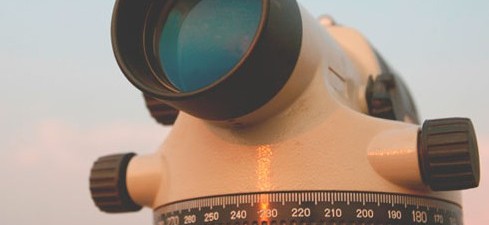
Technology has forever changed the ancient art/science of land surveying. Although experts still rely on old-fashioned tools of the trade, such as compasses, levels, and measuring wheels, modern gadgets help them collect information a lot faster. New equipment and techniques have undeniably altered the profession, making it much broader than it was in the past. Many surveyors now see themselves as project information managers, rather than outside consultants who complete a few specialized tasks. Here is a list of the equipment they might use.
Total Station Theodolite – A modern version of an ancient tool, the total station is a theodolite, or transit, that is equipped with an electronic distance meter. Capable of reading slope distances to specific points from hundreds of yards away, the tool can save surveyors hours on mapping, stakeout, and property line surveying.
3-D Laser Scanner – With the help of this invaluable instrument, surveyors can now create digital 3-D models that help architects accurately visualize the land they will be building on.
Satellite Positioning Systems – Once considered a luxury, GPS technology is now an essential surveying tool experts use to collect data in the field on a daily basis.
GIS Software – The same software that runs programs like Google Maps is utilized by surveyors to create digital maps of nearly any area. Helpful in establishing property lines, these maps are widely used in construction projects of all sizes.
Deep Tows – Contrary to popular belief, surveyors don’t only work on dry land. Some of them explore the ocean floor with equipment called deep tows. These underwater survey systems use sonar or cameras that are towed by vessels to capture images of the ocean floor, which may later be used for academic or construction purposes.
Drones – Many forward-thinking surveyors believe that drones are the biggest thing to happen to the profession since the compass. Inexpensive and easy to operate, these unmanned aircraft are the ideal platform for remote sensing and aerial photography. With the information drones can collect, surveyors can simply and affordably provide accurate measurements, maps, and models of any size project.
New technologies have given surveyors the ability to take a more active role in the construction cycle, from beginning to end. Because the information they collect, analyze, and interpret is needed at all steps and stages of the process, surveyors are fast becoming active members of the management team.





